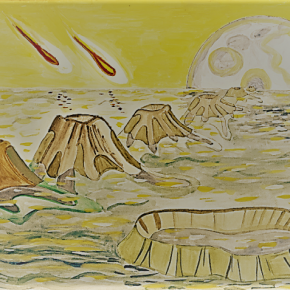The enigma of the origin of the first earth crust finally solved
When and how the Earth’s first crust formed are questions that researchers have been asking for decades. Unfortunately, a handful of microscopic zircons are the only remnants of the Hadean Eon, the first 500 million years of Earth’s existence. These accessory minerals are found only in felsic rocks in a few places around the world such as Jack Hills, Australia. In the absence of primitive crustal rocks, French, Russian, German and American scientists had to develop their hypotheses from experimental data. In a new study, they propose that the formation of such an early crust involves the partial melting of hydrated peridotite interacting with basaltic liquids at low pressure (< 10 km). They use thermodynamic and geochemical modeling to test whether experimental felsic liquids can crystallize Jack Hills-type zircons. Predicted zircon saturation temperatures below 750 °C, modeled Th, U, Nb, Hf, Y, and rare earth element contents, and δ18O signatures and co-crystallizing mineral assemblage support this hypothesis. This work demonstrates that shallow felsic magma generation involving altered primordial ultramafic protocrust and local basaltic intrusions is a viable mechanism for felsic crust formation on the early Earth.

About 4.5 billion years ago, an ocean of liquid water altered the Earth’s early crust. Magmas from protovolcanoes or bolide impacts interacted with this crust to produce the Earth’s first felsic crust © Anastassia Borisova
Further Resource
- Scientific Publication : Hadean zircon formed due to hydrated ultramafic protocrust melting by Anastassia Y. Borisova, Anne Nédélec, Nail R. Zagrtdenov, Michael J. Toplis, Wendy A. Bohrson, Oleg G. Safonov, Ilya N. Bindeman, Oleg E. Melnik, Gleb S. Pokrovski, Georges Ceuleneer, Klaus Peter Jochum, Brigitte Stoll, Ulrike Weis, Andrew Y. Bychkov and Andrey A. Gurenko, https://doi.org/10.1130/G49354.1
IRAP Contact
- Michael J. Toplis, michael.toplis@irap.omp.eu






